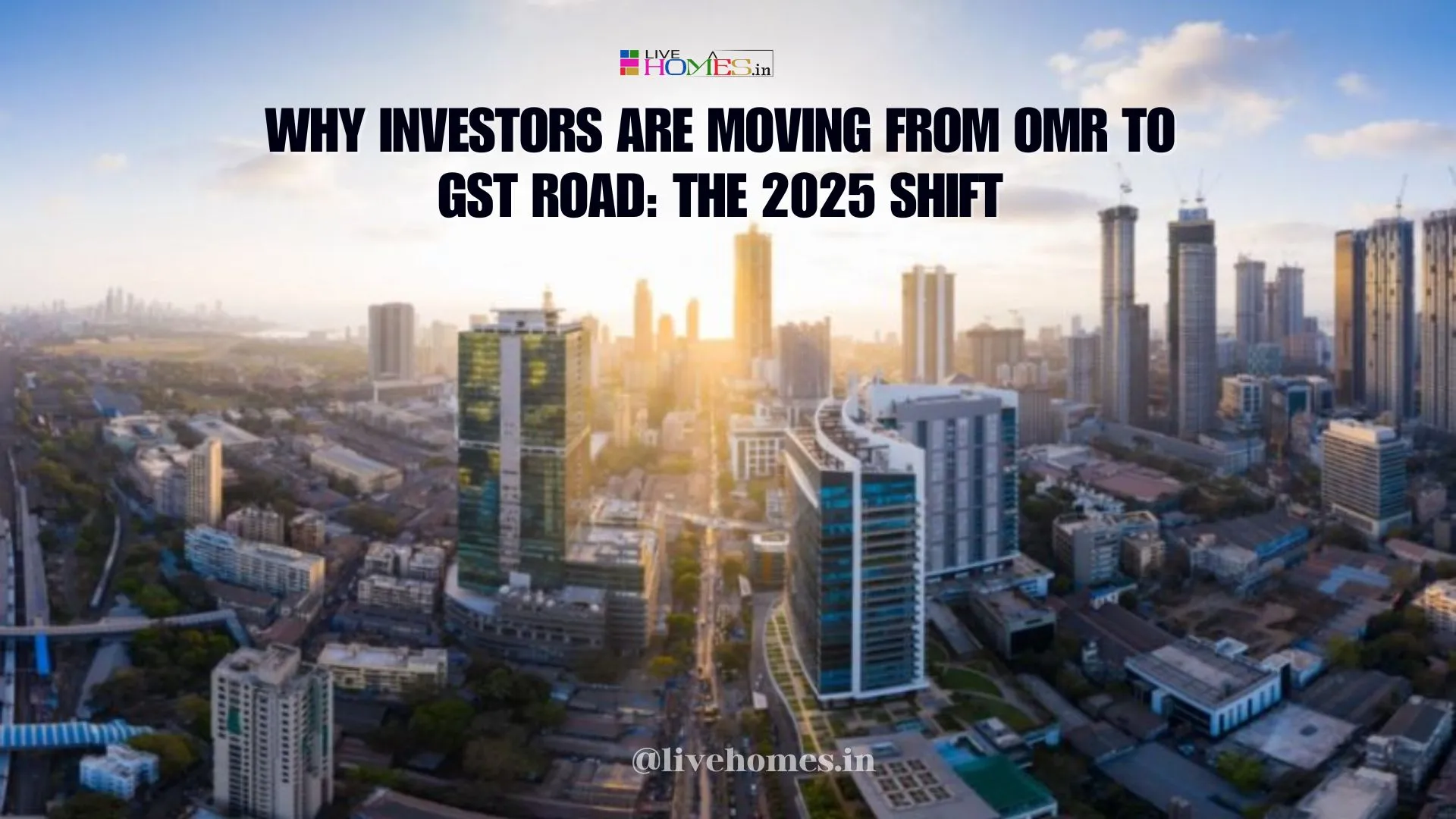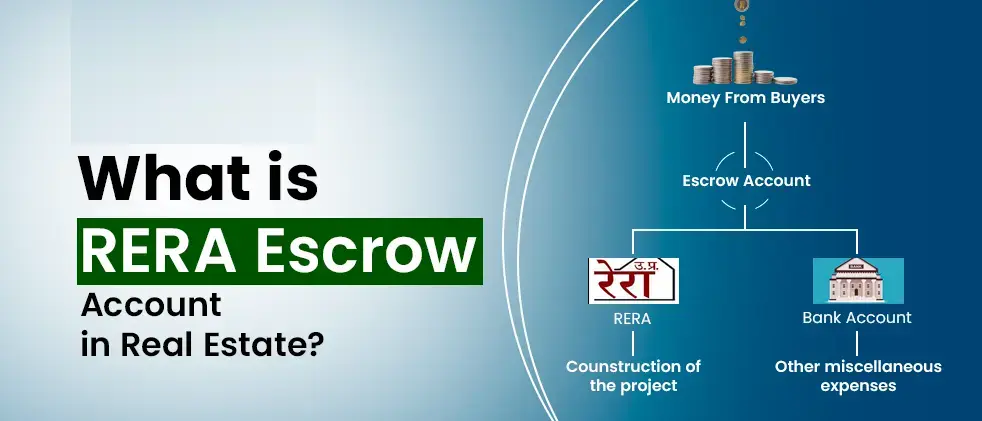In Chennai’s real estate landscape, 2025 marks a clear turning point. For more than a decade, the Old Mahabalipuram Road (OMR) was the undisputed investment magnet. But now, attention is steadily moving toward the Grand Southern Trunk Road (GST Road) — and this shift is not random. It’s the result of deep structural, economic, and developmental changes in the city’s southern corridor.
Let’s understand what’s happening, why it’s happening, and what it means.
1. The story so far – OMR’s dominance and maturity
For nearly 15 years, OMR was known as Chennai’s “IT Corridor.” Major tech parks, SEZs, and corporate campuses created lakhs of jobs. Developers built huge townships, malls, and schools. As a result, OMR became the default location for IT professionals, leading to massive real-estate appreciation between 2010 and 2022.
However, by 2024-25, the OMR story began to change.
- Land prices rose sharply, making entry costs very high.
- New launches became smaller in size but higher in price.
- Infrastructure, though better than most areas, struggled with congestion and flooding.
- Many buyers realized rental yields weren’t keeping pace with capital cost.
In short, OMR has matured — it’s now a stable, developed corridor rather than a fast-growing one. For investors looking for new growth zones, the curve is flattening.
2. The rise of GST Road – Chennai’s next growth frontier
While OMR was maturing, GST Road quietly transformed from an industrial stretch to a balanced residential-commercial belt.
2.1. Infrastructure transformation
In 2025, several mega projects along GST Road are changing its identity:
- Kilambakkam Integrated Bus Terminus and new suburban railway station make it a powerful transport hub.
- Road-widening and flyovers from Tambaram to Chengalpattu reduce travel time dramatically.
- Metro Phase 2 and proposed extensions are linking the airport to southern GST stretches.
- Industrial revival — especially with the reopening of the Ford plant and growth around Mahindra World City — is creating employment again.
This mix of infrastructure and industry makes GST Road a self-sustaining ecosystem — not just a suburb, but a developing urban corridor.
3. The investment logic behind the shift
Properties on GST Road are significantly cheaper compared with OMR or central Chennai. For investors, this means:
- Lower capital requirement, hence higher potential percentage returns.
- Easier entry into plotted developments and villa communities, which are trending in 2025.
- Greater flexibility for long-term appreciation — because price gaps allow room to grow.
3.2. Early-stage advantage
GST Road today resembles OMR of about 10–12 years ago: infrastructure coming up, industries emerging, and residential zones forming around them. Investors are betting on that early-stage growth curve repeating — buying now while development is still catching up.
3.3. Balanced economic base
Unlike OMR, which depends heavily on the IT sector, GST Road supports a wider range of industries — manufacturing, logistics, automotive, and warehousing. This diversity makes the area economically resilient. When tech hiring slows, GST Road’s demand still holds steady because of multiple employment sources.
3.4. Improved connectivity and accessibility
The entire GST Road corridor connects directly to:
- Chennai International Airport,
- Tambaram, the southern “gateway” of the city, and
- Chengalpattu, a key satellite town.
This direct national highway connectivity gives investors confidence that development will continue naturally along this axis. As the metro extends and bus terminals become operational, demand for residential properties near transport hubs will multiply.
4. 2025-Specific Triggers Behind the Shift
a) Industrial resurgence
After a lull, the manufacturing sector around Maraimalai Nagar, Oragadam, and Mahindra World City has revived. New EV and auto-component projects are planned. These bring job creation and housing demand near GST Road.
b) Infrastructure completion
Projects like the Kilambakkam bus terminal, Tambaram flyover, and suburban rail modernization have moved from planning to execution — giving visible assurance to buyers that this corridor is not speculative anymore.
c) Developer interest
Big developers — including branded names — are acquiring large parcels of land along GST Road for plotted layouts and gated communities. When reputable builders move in, investor confidence follows.
d) Shift in investor psychology
By 2025, smart investors have realized that “brand new” or “trendy” locations don’t always yield the best returns. Instead, upcoming corridors with infrastructure under progress often provide better appreciation. GST Road perfectly fits that strategy.
5. Future Outlook (2025–2030)
Analysts expect the GST Road belt — especially between Tambaram and Chengalpattu — to evolve into Chennai’s next major urban expansion zone. Over the next 5 years:
- Residential densities will increase as transport becomes seamless.
- Land prices are likely to grow steadily (not overnight spikes, but consistent gains).
- Commercial projects will follow residential growth, completing the urban ecosystem.
OMR, meanwhile, will stabilize as a high-value corridor, good for end-use and rental income, but with less speculative upside.
6. The essence of the 2025 shift
The migration of investor attention from OMR to GST Road is not about abandoning one area for another. It’s about timing and potential:
- OMR = Developed, safe, predictable returns.
- GST Road = Developing, affordable, higher growth opportunity.
In 2025, investors are simply following the natural cycle of urban expansion — moving to where infrastructure is rising, land is available, and growth is imminent.
Read Also: Industrial corridors boosting land value in Tamil Nadu
Conscusion
Why investors are moving from OMR to GST Road in 2025:
- OMR has matured — high prices, lower upside.
- GST Road offers lower entry cost and large development potential.
- Rapid infrastructure upgrades (flyovers, railway, metro, bus terminal).
- Revival of manufacturing and logistics industries along the corridor.
- Better topography and room for planned communities.
- Developers and institutional investors are eyeing long-term expansion zones.
- The city’s growth direction is naturally shifting southward along GST Road.
https://www.livehomes.in/blogs













